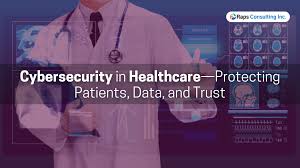Introduction
As hospitals become increasingly digital, cybersecurity has emerged as a top priority for protecting sensitive patient information. From electronic health records (EHRs) to remote monitoring devices, modern healthcare systems handle vast amounts of personal and medical data. Ensuring the privacy and security of this data is not just a legal obligation but also crucial for patient trust and safety.
This article explores how hospitals protect patient data, the threats they face, the technologies used, and the best practices adopted to maintain robust cybersecurity.
Why Cybersecurity Matters in Healthcare
Hospitals store sensitive information, including medical histories, diagnoses, insurance details, and personal identifiers. A breach can lead to:
- Identity theft
- Financial fraud
- Compromised medical care
- Legal consequences
- Loss of public trust
In addition, hospital systems are critical infrastructure. Cyberattacks can disrupt operations, delay treatments, and even endanger lives.
Common Cyber Threats Facing Hospitals
1. Ransomware Attacks
Malicious software locks hospital data and demands payment to unlock it. These attacks can paralyze systems, leading to cancelled surgeries and delayed care.
2. Phishing Scams
Staff may receive deceptive emails that trick them into revealing login credentials or installing malware.
3. Data Breaches
Hackers may exploit system vulnerabilities to access and steal large volumes of patient data.
4. Insider Threats
Employees or contractors with authorized access might misuse data intentionally or accidentally.
5. IoT and Connected Devices
Medical devices connected to the internet, such as pacemakers or infusion pumps, can become entry points for cybercriminals if not properly secured.
Key Cybersecurity Measures Hospitals Use
1. Data Encryption
All patient data is encrypted both at rest and in transit. This means even if data is intercepted or stolen, it cannot be read without a decryption key.
2. Multi-Factor Authentication (MFA)
Staff are required to use multiple forms of verification—such as passwords plus mobile codes—to access sensitive systems.
3. Firewalls and Intrusion Detection Systems
These monitor incoming and outgoing network traffic and block suspicious activities.
4. Access Control
Hospitals restrict access based on roles. For example, a nurse may not be able to access a full patient history like a physician can.
5. Regular Software Updates
Patching systems regularly closes known vulnerabilities that hackers often exploit.
Compliance with Privacy Regulations
Hospitals must follow strict regulations regarding data protection:
1. HIPAA (Health Insurance Portability and Accountability Act) – USA
Sets national standards for the protection of health information. Hospitals must ensure data confidentiality, integrity, and availability.
2. GDPR (General Data Protection Regulation) – EU
Applies to hospitals in Europe or those treating EU citizens. It mandates clear consent protocols and allows patients to access or delete their data.
3. PIPEDA (Personal Information Protection and Electronic Documents Act) – Canada
Regulates data handling in healthcare organizations in Canada.
4. Other Local Laws
Countries like Australia, India, and the UK have their own data protection laws tailored to the healthcare sector.
Staff Training and Awareness
Human error is one of the biggest cybersecurity risks. Hospitals invest heavily in training staff to:
- Identify phishing emails
- Use strong passwords
- Report suspicious activity
- Avoid sharing login credentials
Regular awareness campaigns and simulated attacks help improve staff readiness.
The Role of IT Security Teams
Every hospital has or should have a dedicated cybersecurity team responsible for:
- Monitoring network traffic
- Responding to threats
- Conducting security audits
- Updating security policies
- Managing incident response plans
These professionals work around the clock to safeguard hospital systems.
Real-World Examples of Hospital Cyber Incidents
1. WannaCry Attack (2017)
This global ransomware attack affected the UK’s National Health Service (NHS), cancelling surgeries and locking down computers.
2. UHS Attack (2020)
Universal Health Services, one of the largest healthcare providers in the U.S., faced a ransomware attack that led to a system shutdown.
These examples highlight the importance of preparedness and fast response mechanisms.
Role of AI and Machine Learning in Cybersecurity
Hospitals are now adopting artificial intelligence to detect threats faster. AI systems can:
- Identify unusual user behavior
- Detect malware patterns
- Automate threat responses
- Analyze massive volumes of data in real-time
Machine learning improves over time, making the system smarter at identifying threats.
Cloud Security in Healthcare
Many hospitals are shifting to cloud-based platforms for data storage and collaboration. To secure these systems:
- Cloud providers implement encryption and access controls
- Hospitals sign Business Associate Agreements (BAAs)
- Regular audits ensure compliance with security standards
Cloud platforms also offer disaster recovery options in case of cyber incidents.
Best Practices for Patients
Patients can also play a role in protecting their data:
- Use strong passwords for hospital portals
- Monitor medical records regularly for suspicious changes
- Report suspected fraud or unauthorized access
- Be cautious of sharing personal information over the phone or email
Challenges Hospitals Face in Cybersecurity
- Budget Constraints: Cybersecurity can be expensive, especially for smaller hospitals.
- Complex Systems: Integrating old and new technologies securely can be difficult.
- Staff Turnover: Training new staff frequently is a constant challenge.
- Evolving Threats: Hackers continually change tactics, requiring hospitals to stay ahead.
Conclusion
Cybersecurity in hospitals is no longer optional—it’s essential. With the growing reliance on digital systems, hospitals must protect patient data from increasingly sophisticated threats. From encryption and access control to AI-driven monitoring and staff training, modern healthcare institutions are taking a multi-layered approach to security.
As patients and technology users, understanding these protections can enhance trust in healthcare providers and encourage safer interactions in an increasingly digital medical world. Hospitals that prioritize cybersecurity not only comply with regulations but also ensure better, uninterrupted care for their patients.
